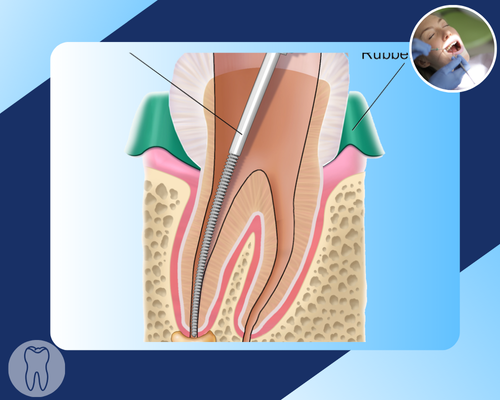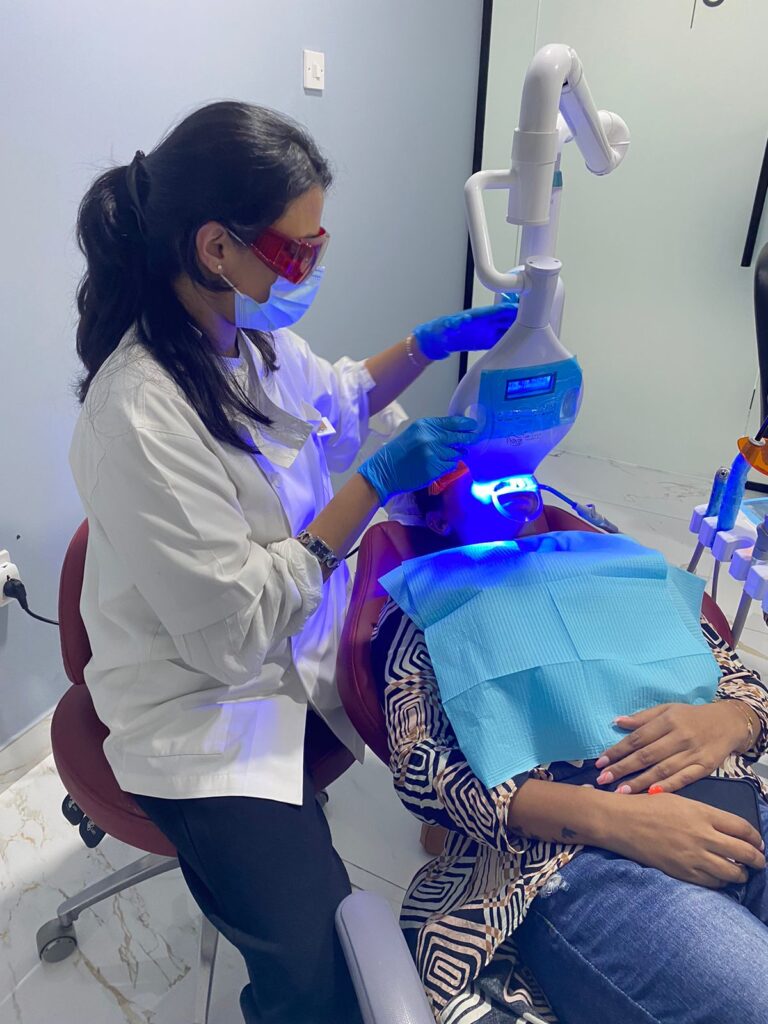
Root Canal Treatment in Dubai
Best dental clinic in Jumeirah 1
If you discover your teeth are sensitive specially to hot as well as cold sensations, feeling discomfort when biting or chewing, or deep tooth decay then you may need root canal treatment for your dental problem.
We are at Dr. Nudrat Dentist, Dubai offers best quality, quick and affordable root canal treatment to our patients and help them to prevent from tooth decay.
We are happy to help you and give you best of the best dental treatment. Visit our clinic for your any dental problem.
What is Root Canal Treatment?
A “root canal” is a dental function, which is not a therapeutic operation. The pulp, commonly referred to as the hollow part of a tooth, is where the nerves, blood vessels, and various other cells are located.
The crown and roots make up a tooth. Crown is mostly above the gum, whereas the roots are mostly below it. And the jawbone is connected to the tooth’s roots.
The pulp is located between the crown and the root, or the root canal. Pulp supplies nutrition and moisturizes the tooth’s surrounding tissue. Nerves that are located in the pulp perceive heat and cold as painful.
Actually, the phrase “root canal” is related to a dental technique known as endodontic therapy, which literally translates to “inside the tooth.”
But the phrase “root canal” is now frequently used to refer to the surgical procedures.

Root Canal Treatment Procedure:
Before performing your root canal, your doctor or dentist will take a dental X-ray of the injured tooth. This makes it possible to assess the degree of injury and confirms that root canal therapy is the best course of action. The actions that will be taken during your root canal treatment are listed below.
1) Anesthesia
To make the damaged tooth and the gums around it feel better, topical anesthetic is initially applied. Additionally, sedatives such as nitrous oxide, oral sedatives, and intravenous sedation are utilized in dentistry to help you unwind. If you suffer from dental-related anxiety, your doctor might suggest sedation.
2) Installation of a dental dam
A tiny dam of rubber is put over the area before starting root canal therapy. This isolates the tooth and keeping it dry during the treatment.
3) Making the entrance hole
The pulp can be accessed by making a small opening or hole in the tooth’s crown.
4) Pulp elimination
The nerves, blood arteries, and tissues within the tooth are removed using teeny dental tools.
5) Canals shaping
The pulp chamber as well as root canals are cleansed, sanitized, and shaped once the pulp has been eliminated.
6) Filling up canals
Gutta-percha, a flexible, rubbery dental material, is then used for filling the empty canals.
7) Tooth sealing
To prevent bacteria from recurring, the decaying tooth is subsequently sealed with a temporary dental filling.
8) Installing the last restoration
Most of the time, a dental crown is required to safeguard the repaired tooth as well as to fix your bite. Crown manufacturing typically takes up to three weeks because they are built to order. The temporary filling is taken out and then the permanent crown is put in once your crown is ready. In some cases, you might be able to get a crown at the same visit.
Is Root Canal Treatment Painful?
One of the primary worries about this type of treatment is that it will hurt, but if it is carried out by a trained dentist surgeon, it should be reasonably painless.
The infection is the source of the discomfort, not the medication. Rather than causing pain, the root canal treatment works to lessen it.
By administering local anaesthetic to the tooth and its surroundings, the dental surgeon will lessen any discomfort associated with the surgery.
Some pain following the procedure is typical. It will pass, and over-the-counter painkillers can be sufficient to relieve it.
The dentist may advise taking an antibiotic to treat or prevent illness.
Who Needs Root Canal Treatment?
Patients typically require a root canal when they discover their teeth are sensitive, especially to hot as well as cold sensations
There are a various indicators that may indicate the need for a root canal:
👉🏾Severe discomfort when biting or chewing
👉🏾Gums with pimples
👉🏾Tooth that is fractured or chipped
👉🏾Persistence of either cold or heat sensitivity even after the sensation has passed
👉🏾Enlarged or sensitive gums
👉🏾Deep tooth decay or gum discoloration
Advantages of Root Canal Procedure?
👉🏾Halt the infection from spreading to other teeth.
👉🏾Reduce tooth symptoms of infection and indications.
👉🏾lessen the possibility of jawbone injury.
👉🏾Make it unnecessary to pull teeth.
Important Preventions to Stay Away From Dental Disease.
👉🏾Cleaning your teeth before going to bed and at least once more each day.
👉🏾Using fluoride-containing toothpaste
👉🏾Utilizing the right toothbrush and replacing it frequently
👉🏾Obtaining routine dental examinations and cleanings
👉🏾Using floss for cleaning in between teeth and stop plaque accumulation
👉🏾Maintaining a healthy diet and staying away from sugary drinks and meals.
Free Root Canal Treatment Consultation
Root Canal Treatment Clinic in Jumeirah 1, Dubai
Meet Dr. Nudrat, for root canal treatment in Dubai and know more about different options and solutions for root canal treatment.
- Consultation with the dental expert.
- Know more about different treatment options.
- Get to know if you are candidate for root canal treatment.
- Get answers for all your questions about root canal treatment.
- Written treatment plan.

